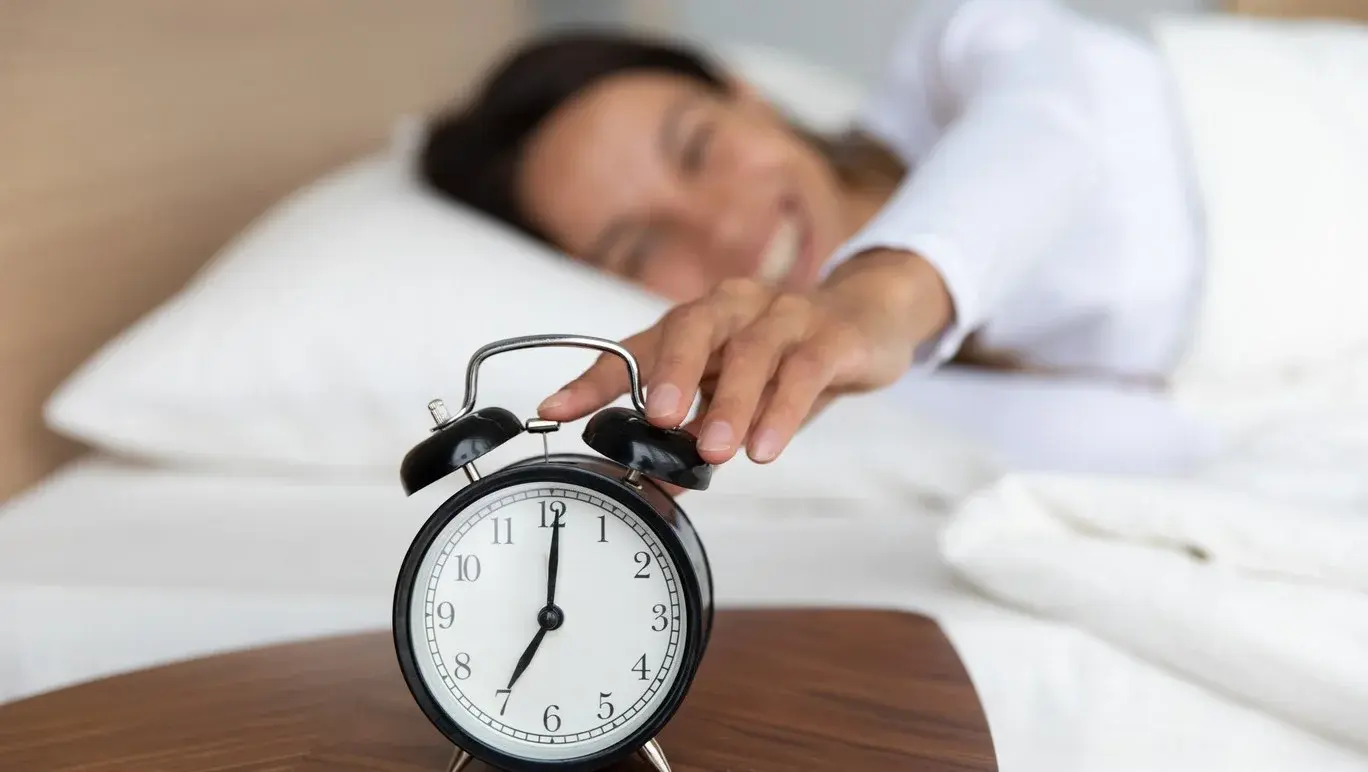How to manage sleep when daylight savings changes

In Australia, Daylight Saving Time (DST) is observed in NSW, Victoria, Tasmania, South Australia, and the ACT. The time that is not in DST is called Standard Time. Every year it begins at 2am on the first Sunday in October, when clocks are put forward one hour. It ends at 3am DST on the first Sunday in April, when clocks are put back one hour to 2am, meaning we can soon enjoy an extra hour in our “night”.
Many people are often seeking information about how to cope with daylight savings changes and often don’t know which way the clocks go at which time of year! This confusion is even more common because of social media, where we share platforms with people in the northern hemisphere, where DST is observed differently.
Here are some cool fun facts for you to help you always know which way the clocks go when it’s DST. The term ‘fall back’ is used in many countries so we remember to turn our clocks back one hour in “fall” (known as autumn in Australia). In spring, the term “spring forward” is used when the clocks get put forward one hour so it’s an easy way to remember which direction the clocks move in relation to DST.
Does daylight savings affect your sleep?
Yes, shifting the clock around can disrupt the sleep patterns of most people. For some, the one-hour time shift doesn’t seem to affect them.
In spring, although we “gain” an extra hour of daylight, we also lose an hour of sleep if we’re not prepared. This lost hour has been shown all around the world to have some alarming health consequences: There have been increased reporting of heart attacks and car crashes on the day after the clocks shift. Fortunately, in autumn, “falling back” with the clocks may actually help us to sleep better. After the time change, it will get dark earlier, which could prompt us to go to bed earlier, especially after the long, well-lit summer evenings that encourages us to stay up much later. It will also be lighter in the mornings, making it easier to get up to do some exercise to start the day well.
Can you prepare for daylight savings?
Yes you can! Our circadian rhythms are naturally aligned with the cycle of light and darkness. To minimise sleep disruption, try adjusting your bedtime by 15 minutes earlier for 3–4 nights before the spring transition, and 15 minutes later for 3–4 nights before the autumn transition. This simple adjustment can help reduce the risk of sleep loss and make you less prone to sleepiness the next day.
It might suit you better to prepare by getting up earlier or later by 15 minutes per day in the days leading up to the DST changes instead of adjusting your bedtime. Do what suits you best. Also keep in mind the general tips for better sleep apply and may need to be called upon in the days before and after the DST changes A reminder that these sleep tips are:
- Avoid alcohol before bed: Have a buffer of 3-4 hours between alcohol and sleep. While alcohol can help with feeling sleepy, it causes sleep disruptions and lowers sleep quality so it’s not a good sleep tool.
- Establish a consistent sleep routine: Going to bed and waking up at roughly the same time each day, including the weekends, can promote more consistent sleep before and after changes between standard time and daylight saving time.
- Spend time outdoors: Exposure to natural daylight can alleviate feelings of tiredness in the morning. Natural light can also help stabilise your circadian rhythm to minimise sleep disruptions.
- Nap in moderation: If you feel sleepy, a short nap may give you more alertness and energy. Short naps are recommended so that you don’t wake up out of deep sleep and feel groggy and disoriented.
- Avoid caffeine too close to bedtime: Be mindful of when and how much caffeine you consume and how sensitive you are to caffeine.
The bottom line
Generally, thanks to that extra hour, "falling back" isn't nearly as disruptive to our bodies as putting the clocks forward at the beginning of daylight saving. However, if people are already sensitive with their sleep and especially if they’re driving, using heavy machinery or in situations where safety is an issue, they need to be extra vigilant in the lead up to, and the days after, there are daylight saving changes. While it can take up to a week to feel back to normal after the beginning of DST in October, in April when it ends it usually only takes one or two nights to adjust to the new time.
Related:
Reviewed by Healthylife Advisory Board April 2025
This article is for informational purposes only and does not provide medical advice, diagnosis, or treatment. Any information published on this website or by this brand is not intended as a substitute for medical advice. If you have any concerns or questions about your health you should consult with a health professional.
